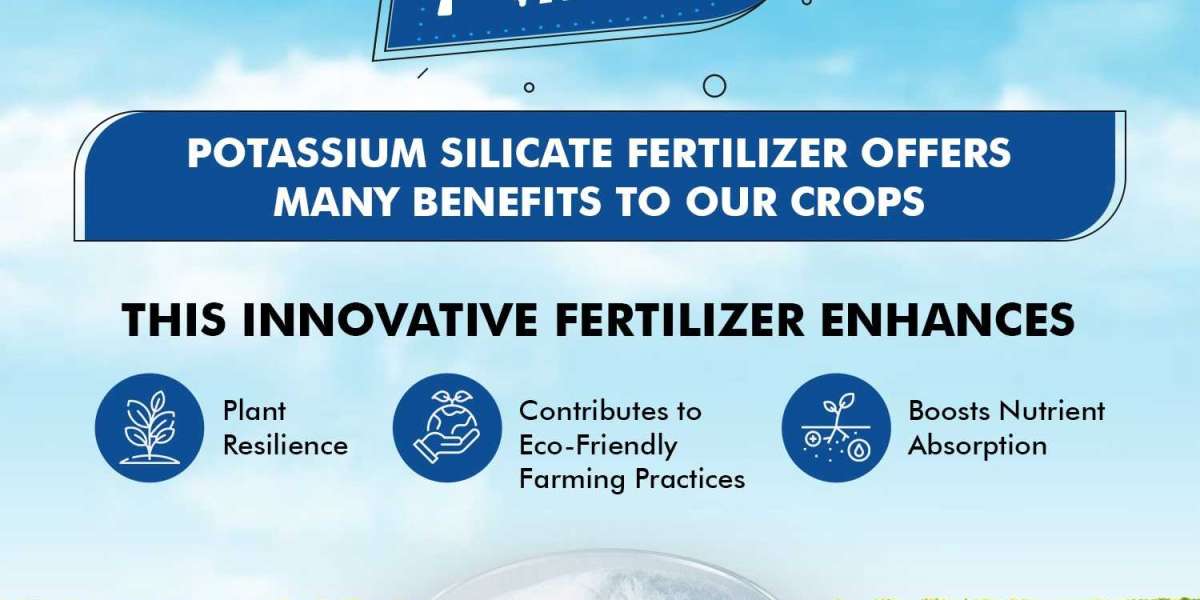Introduction:
Fertilizers play a crucial role in modern agriculture, providing essential nutrients to plants for robust growth and improved yield. Among the diverse range of fertilizers available, potassium silicate-based fertilizers have gained recognition for their ability to enhance plant health and resilience. In this comprehensive guide, we will delve into the world of potassium silicate fertilizers, focusing on application techniques that can help you maximize their benefits.
Understanding Potassium Silicate Fertilizers:
Before we dive into application techniques, let's briefly understand what potassium silicate fertilizers are and why they are valuable in agriculture.
Potassium silicate fertilizer is a source of two essential elements: potassium (K) and silicon (Si). While potassium is well-known for its role in plant growth and stress tolerance, silicon, often overlooked, offers unique benefits such as improved resistance to pests, diseases, and environmental stressors.
The Benefits of Using Potassium Silicate Fertilizers:
Enhanced Disease Resistance: Silicon strengthens plant cell walls, making it more difficult for pathogens to invade. This results in improved resistance to diseases.
Increased Pest Resistance: The tougher cell walls also act as a natural deterrent to pests, reducing the need for chemical pesticides.
Better Tolerance to Environmental Stress: Potassium silicate helps plants endure environmental stressors like drought, heat, and cold by enhancing their ability to retain water.
Improved Nutrient Uptake: It aids in the efficient uptake of other essential nutrients, making the plant healthier and more robust.
Enhanced Crop Yield and Quality: Ultimately, potassium silicate can lead to increased crop yield and improved quality of produce.
Now that we understand the advantages, let's focus on the application techniques to harness these benefits effectively.
Application Techniques for Potassium Silicate Fertilizers:
Soil Application:
- Broadcasting: For field crops, spreading potassium silicate evenly over the soil surface before planting is a common method. It's crucial to ensure uniform coverage to prevent nutrient imbalance.
- Incorporation: In situations where potassium silicate is in granular form, it can be mechanically incorporated into the soil. This helps in better nutrient distribution and minimizes surface runoff.
- Band Placement: In row crops, applying potassium silicate in narrow bands near the plant roots can optimize nutrient uptake. This method conserves fertilizer and minimizes contact with plant foliage.
Foliar Application:
- Spray Application: Potassium silicate can be dissolved in water and sprayed directly onto the leaves. This method is especially useful for rapid nutrient absorption and addressing nutrient deficiencies during the growing season.
- Timing: Foliar applications are best done during early morning or late afternoon to prevent leaf burn from intense sunlight. Avoid application during extreme weather conditions.
- Coverage: Ensure complete coverage of both upper and lower leaf surfaces for effective absorption. Use a proper nozzle and spray pressure to achieve this.
Seed Treatment:
- Coating Seeds: Treating seeds with potassium silicate before planting can provide young seedlings with an initial nutrient boost. It's particularly beneficial for crops that face early stressors.
- Drying: After coating, allow the treated seeds to dry thoroughly before planting to prevent clumping and ensure uniform distribution.
Drip Irrigation:
- Injecting Through Drip Systems: In modern agriculture, potassium silicate can be delivered through drip irrigation systems. It ensures precise and consistent nutrient delivery to the root zone.
- Compatibility: Before using this method, ensure that the potassium silicate solution is compatible with your irrigation system to prevent clogging.
Hydroponics and Soilless Media:
- Hydroponic Systems: In soilless growing systems like hydroponics, potassium silicate can be added to the nutrient solution. It aids in nutrient uptake and can improve plant growth in controlled environments.
- pH Adjustment: Monitor and adjust the pH of the nutrient solution when using potassium silicate to maintain an optimal growing environment.
Frequency and Timing:
- Regular Applications: To maintain consistent nutrient levels, consider splitting the total required potassium silicate dosage into multiple applications throughout the growing season.
- Timing with Plant Growth Stages: Align fertilizer applications with the specific growth stages of your crops. Young seedlings, flowering, and fruiting stages may require different nutrient levels.
Monitor and Adjust:
- Soil and Tissue Testing: Regular soil and tissue testing can help you assess nutrient levels and adjust your potassium silicate application rates accordingly.
- Environmental Factors: Be aware of environmental factors like rainfall and temperature, as they can influence nutrient availability and uptake.
Safety Precautions:
- Protective Gear: When handling potassium silicate fertilizers, wear appropriate protective gear, including gloves and safety glasses.
- Storage: Store fertilizers in a cool, dry place away from direct sunlight and moisture to maintain their effectiveness.
Conclusion:
Potassium silicate fertilizers have emerged as valuable tools in modern agriculture, offering numerous benefits for plant health and yield. By applying these fertilizers using appropriate techniques, you can harness their full potential and contribute to more resilient and productive crops. Whether you are a large-scale farmer or a backyard gardener, understanding the best practices for using potassium silicate fertilizers can lead to healthier plants and a more bountiful harvest.








